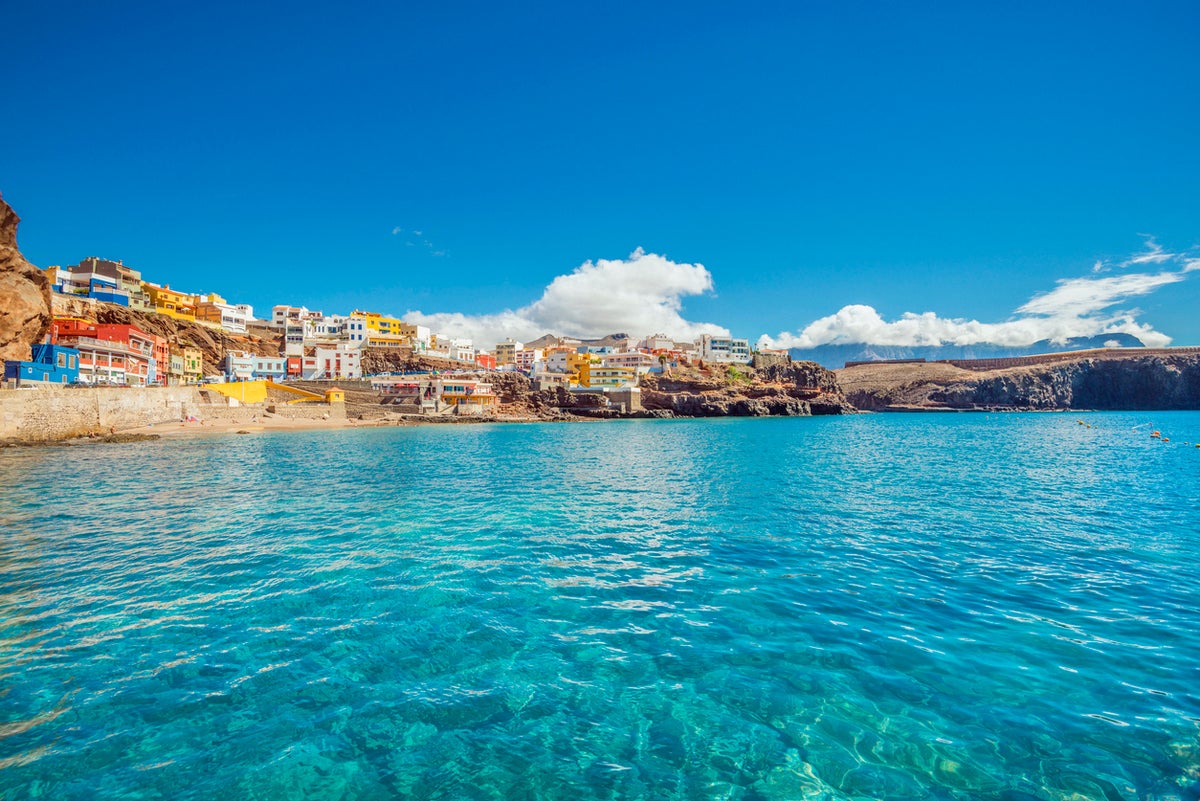
December often brings miserable weather, from rainy overcast days to frosty mornings and even the odd sprinkling of snow.
Though for many the end of the year brings the excitement of the festive period, a jam-packed social calendar and time spent with family and friends, for others the combination of cold snaps, dark evenings and the intensity of the holidays makes the final month of the year a bit of a slog.
Those hoping to duck out of drawn-in nights and shiveringly chilly mornings could consider swapping sleet and snow for sun and sand on a trip to Europe. Destinations such as Crete and Malta usually bask in warmer temperatures of up to 20C, meaning you can breakfast al fresco by by the pool while your neighbours are defrosting their cars.
Though the period directly either side of Christmas can be expensive, earlier dates in the month are more affordable times to travel, well outside of peak season and school holidays. To help you plan your pre-Christmas European getaway, we’ve compiled a list of the best places to catch the sun at the end of the year.
Tenerife, Spain
Tenerife’s weather allows for days spent on the beach, even in December— (Getty Images)
- Average temperature in December: 18C
- Average sunshine hours: 6
The largest of Spain’s Canary Islands, Tenerife has long been a popular holiday spot for Brits, catering to everyone from young families to party-going groups of friends. The Canaries’ location off the west coast of Morocco provides ideal year-round weather for many visitors, with average highs of around 21C even in December.
There are several towns and cities on the island, the largest of which is Santa Cruz (the capital, found near the northeastern tip of the island). A city of over 200,000 people, it is home to the island’s main tourist attractions and is centred around the magnificent Plaza de Espana (at the centre of which lies a large, man-made lake). Other options for a resort stay include Los Cristianos and Playa de las Americas, both on the southwest coast of the island.
The island also has an abundance of natural wonders. The centre piece is the imposing Mount Teide – the highest peak in Spain at 3,715m – and the associated National Park, where visitors can explore volcanic landscapes and hike through hills and forest, with sensational views over the island. On the coast, you’ll find the dramatic cliff faces of Los Gigantes and sandy beaches such as Playa del Duque and Playa de las Teresitas.
Limassol, Cyprus
The marina in Limassol city— (Getty Images/iStockphoto)
- Average temperature in December: 15C
- Average sunshine hours: 6
Cyprus is one of the warmest countries in Europe in winter, and the city of Limassol is a busier, more cosmopolitan alternative to the historic sites and sandy beaches of Paphos or the small-town feel of Larnaca.
The second-largest city on the island, Limassol offers an attractive marina, where stone and white-washed buildings line limestone streets for a particularly memorable sunset view.
Products of its own ancient history include Limassol Castle and the 2,000-year-old ruins at Amathus, while those in search of nature can find a peaceful oasis at the Municipal Gardens. If you want beaches, Lady’s Mile, Dasoudi Beach and Governor’s Beach are some of the most popular in the area and are all suitable for swimming and water sports.
Read more on Europe travel:
- Best holiday destinations for November in 2023: Sunny autumn breaks
- 10 best European city breaks – and where to stay this winter
- Best ski resorts in Switzerland for your next skiing holiday
Madeira, Portugal
Madeira has several great destinations, including the village of Camara de Lobos— (Getty Images/iStockphoto)
- Average temperature in December: 16C
- Average sunshine hours: 5
Madeira is a rugged, volcanic archipelago located in the Atlantic in between mainland Portugal and the aforementioned Canary Islands. This location gives it a pleasant, temperature winter climate, with average highs of around 20C in December.
The capital, Funchal, is a coastal city composed of winding streets that house hundreds of red-roofed, white buildings. Whether walking along the mazy streets and the waterfront promenade or taking in the beauty of the Monte Palace Tropical Gardens or Se Cathedral, you’ll find a vibrant, friendly city with plenty to see and do.
Away from the hustle and bustle, Madeira is another island where nature is king. Its diverse landscapes include steep, jagged cliffs, rolling green hills and pristine golden beaches, all of which provide ideal opportunities for adventure activities such as hiking, canyoning, mountain biking and even paragliding. For walkers, the island is home to a network of special irrigation channels called ‘levadas’; once a way to transport rainwater from the mountains to the settlements, they now provide man-made walks and hikes across the forests, mountains and valleys of the island.
Gibraltar
The Rock of Gibraltar is the territory’s most well-known landmark— (Getty Images/iStockphoto)
- Average temperature in December: 15C
- Average sunshine hours: 6
This British Overseas Territory at the southern edge of Spain is a truly unique blend of British, Spanish and local influences, from the development of llanito and Gibraltarian English to the presence of traditional English pubs and the distinctly European Old Town.
The Rock is the territory’s most recognisable landmark; a cable car journey or hike to the top is a must-do activity to take in sweeping views of the Strait, the city and the shores of northern Africa. Plus you’ll likely see some Barbary macaques, the only wild monkeys in Europe. For more nature-based adventures, there are an estimated 150 caves to explore within the Rock, including St. Michael’s Cave, an impressive network of caves that are home to dozens of stalactites and stalagmites, and that have previously been used as an auditorium and concert venue.
Away from the Rock, Gibaltrar’s small size makes it a manageable, walkable destination. For history buffs, Gibraltar’s previous historical importance is showcased in its Old Town just as much as it is in the Moorish Castle or the Great Siege Tunnels (dug from 1779 when under siege by the Spanish and French). Alternatively, you might want to wander its streets, from Irish Town to the Windsor Suspension Bridge or the Ibrahim-al-Ibrahim Mosque.
Crete, Greece
Chania is one of the most picturesque destinations in Crete— (Getty Images/iStockphoto)
- Average temperature in December: 14C
- Average sunshine hours: 5
With average highs of 17C during December, Crete is one of the warmest places in Greece in winter.
There are several typically idyllic Greek towns on the island. Chania is home to Venetian and Ottoman influences, most visible in its charming harbour, while the historic capital of Heraklion showcases the island’s rich historical heritage; the island is home to several ruins of the Minoan civilisation, and notable sites include the Palace of Knossos and the ruins of Malia.
An island of rocky, rough terrain and a mix of arid and green landscapes, Crete also contains plenty of places for outdoor pursuits, from hiking the Samaria Gorge or the White Mountains to swimming in the Baloo Lagoon or enjoying the pink sands of Elafonisi.
Gran Canaria, Spain
An aerial view over Las Palmas, the main city on Gran Canaria— (Getty Images)
- Average temperature in December: 18C
- Average sunshine hours: 6
Another of the perennially warm Canary Islands (Lanzarote and Fuerteventura have not made this list, but it’s also worth checking them out), Gran Canaria offers an equally enviable array of potential activities.
Its capital, Las Palmas, is the largest city in the Canaries and is a more cosmopolitan alternative to Santa Cruz de Tenerife. The historic Vegueta district is a good starting point, while popular museums include the Museo Canario (for a look into the pre-colonial history of the islands) and the one-time house of Christopher Columbus, that has now been turned into a museum. Other popular resort towns include Puerto Rico and Maspalomas, most famous for the vast expanse of sand dunes that leads to its beaches.
Maspalomas isn’t the only natural marvel on the island. Gran Canaria is covered by mountainous terrain and valleys; the Caldera de los Marteles and the barrancos (ravines) of Guayadeque and Azuaje are ideal for hiking, while the Roque Nublo (a 67-metre tall volcanic rock) is an iconic geographical landmark. There are plenty of beaches worth exploring too, including Las Canteras, Amadores and Gui Gui.
Valletta, Malta
A view of Valletta’s Marsamxett Harbour and Cathedral of Saint Paul— (Getty Images)
- Average temperature in December: 14C
- Average sunshine hours: 6
The Maltese capital, though small, is a charming city packed with varied architecture, labyrinthine streets and heritage buildings (with average December highs of 17C to top it all off).
The entire city is a Unesco World Heritage Site – designated for its links to the Order of St John – and contains 320 monuments in an area of just 0.21 square miles, making it one of the most concentrated historic areas in the world. A maze of Baroque, Renaissance and neoclassical buildings awaits visitors, visible in landmarks such as St John’s Co-Cathedral and the Grandmaster’s Palace, though you can visit the City Gate and Triton Fountain for examples of more modern influences.
Valletta also boasts pretty squares such as Freedom and Triton, home to the gate and fountain; traditional local markets, like the open-air Sunday Market at the Gate; and other historical sites such as the fortifications and defensive walls. These are all punctuated by plenty of restaurants and shops selling anything from international cuisine to Maltese crafts – the island is well-known for its glass blowing, knitting, weaving and clock-making. The country’s compact size makes Valletta a great base for visiting other destinations too, from Sliema to the small neighbouring isle of Gozo.
Palermo, Italy
A view over the Pretoria Fountain in Palermo— (Getty Images/iStockphoto)
- Average temperature in December: 14C
- Average sunshine hours: 5
The capital of Sicily – the largest island in the Mediterranean – is less hot than other destinations on the list but is one of the the warmest places in Italy come December. This vibrant city is a hub of activity, from its street markets, including the Ballaro and Capo food markets and the Vucciria bazaar, to the tourists weaving in and out of landmarks and museums such as the Palatine Chapel, the Norman Palace and the Palazzo Abatellis’ Sicilian Regional Gallery.
Alongside discovering the city’s Roman, Arab and Norman history, visitors can also sample local cuisine and top tier beaches. Sicily is the birthplace of arancini and cannoli, while the northern coast near Palermo has dozens of miles of golden sands and azure waters.
Red our reviews of the best hotels in Europe







